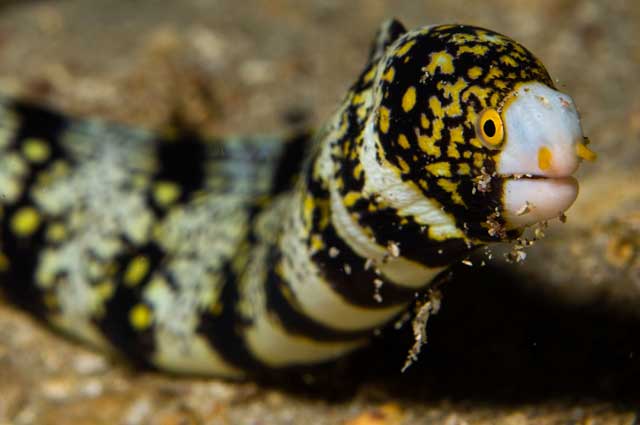Pet Of The Week: The snowflake moray eel

Who's this slippery customer?
A snowflake moray eel (Echidna nebulosa) – it may not strike you as being an obvious pet, but for lovers of exotic aquatic life, eels are a constant source of wonder: inquisitive, lively and beautiful. It is not to be confused with the massive conger eel that lurks in the depths and terrifies unwary scuba divers, though it shares some genetic traits with this denizen of the deep, and can grow up to a metre in length.
Where do I keep such a beast?
According to Mike Wells of Cooden Marine Aquatics in East Sussex, you will need a saltwater tank no smaller than 400 litres (or 80 gallons), which is about 4ft in length (a monster in itself). The snowflake, like all eels, likes to have plenty of interesting reef-like nooks and crannies to hide out in during the day, so the aquarium itself should be a thing of beauty to match the vibrant colouring of the eel. Then you have to think about creating a sturdy coral (even fake coral) environment, as the eel likes to dig its own channels, mirroring its voracious nocturnal hunting activity in the wild. The fish, tank, filtration system and other start-up costs can set you back £1,000, says Mike, so owning an eel is not something you should enter into lightly.
What does he eat (apart from unwary scuba divers)?
Snowflakes, like all eels, are very short-sighted, and they see by "tasting" the water, much like a snake licks the air to smell its prey. "They will have a go at anything that smells like food, including your finger," says Mike. On the whole they are not fussy eaters, and will eat most fresh fish, hence you should keep them separate from your prized clownfish, or Nemo will most definitely not be finding his way home. Prawns and cockles are the favourite dish of the day, so again, think of the money involved before you commit.
Any other concerns?
As I said, eels should be kept separate from other smaller fish, but they are not particularly aggressive, it's simply that they cannot see too well. Large fish, such as tangs, that are a match in size for the snowflake, will get along just fine. The key to a happy eel is to keep a constant temperature, salinity and cleanliness within the tank – some owners see this as the "art" of owning an eel. Again, this all takes time, and for this reason owning any saltwater fish is more for devotees than starter pet owners.
How much is that eel in the fishtank?
About £65.
And what is the life expectancy?
If kept healthy, they can live for more than four years.
Where do I find one?
Contact the knowledgeable Mr Wells about the snowflake moray eel, or any other exotic fish for that matter, on 01424 220707, or visit coodenmarineaquatics.co.uk.
Join our commenting forum
Join thought-provoking conversations, follow other Independent readers and see their replies
0Comments